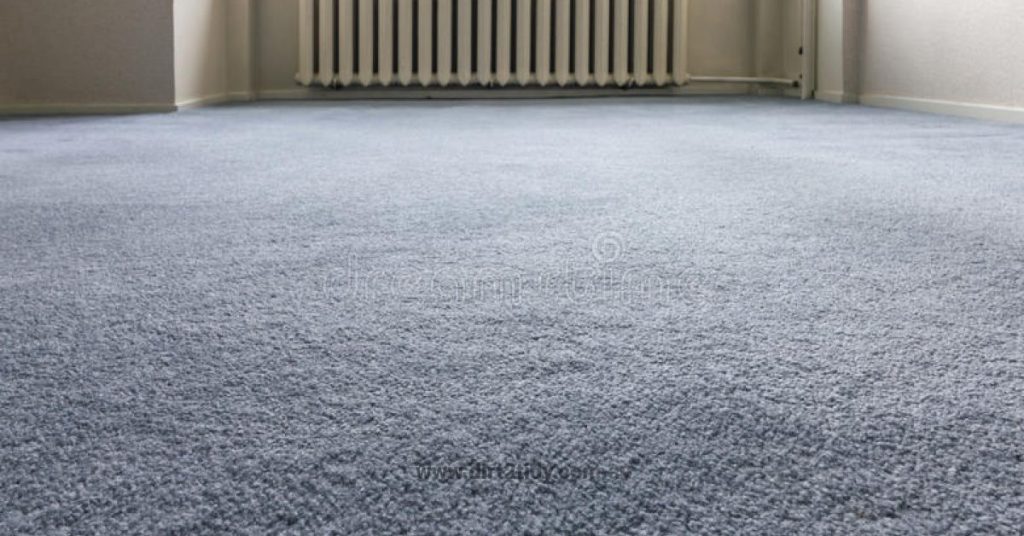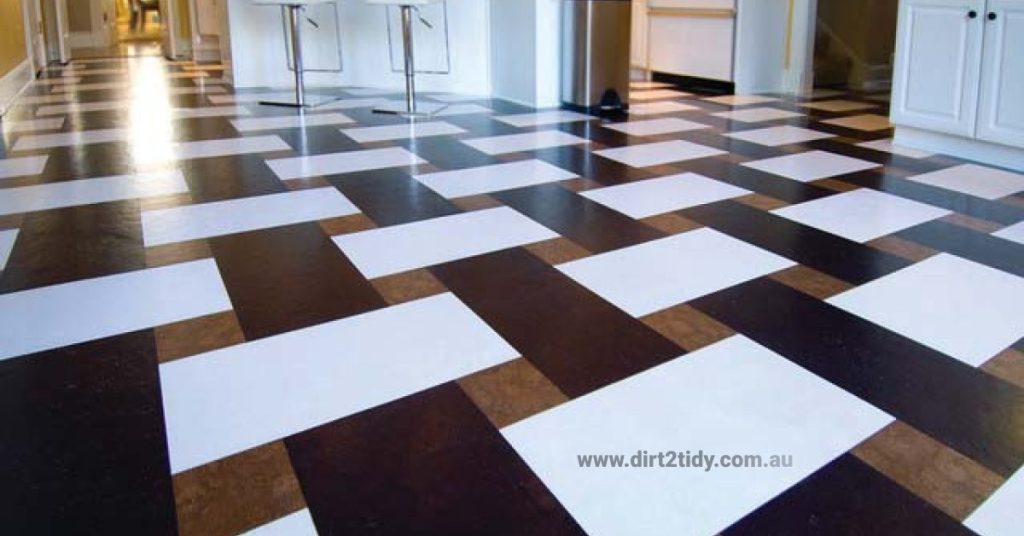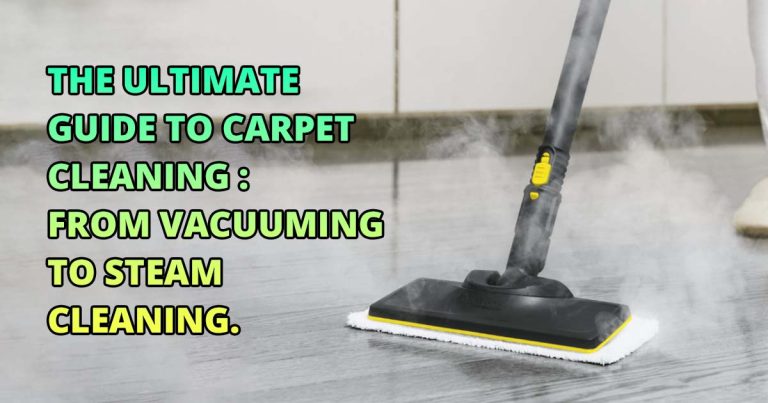Table of Contents
One of the most crucial elements to select when constructing a new house is flooring. In addition to the many aesthetics that each type of floor covering offers, each one also has pros and cons of its own, whether they are tile floors, carpet or hardwood floors.
To help you choose between the three flooring options, this article will discuss the differences between flooring materials and which one is easy to clean.

Carpet
The majority of homeowners choose carpet because of the wide range of options available. Some individuals decide to carpet every room in their house, while others opt to simply carpet certain areas (just the bedrooms, for example). One of the most common forms of flooring is carpet, for a variety of reasons, including:
Carpets provide comfort. They give a space a cozy, welcome feel and make the floor comfortable enough to sit or lie down on.
Finding the ideal tone or shade to complement your interior spaces is simple because carpets come in a number of colors and tints.
They Provide a Room with Texture, Which Enhances Its Visual Appeal
Another significant benefit of carpeted floors is warmth. The fibers can hold onto heat, and adding underfloor heating can make this insulation even better. This explains why people prefer carpets in cooler areas. Carpets don’t have this problem, whereas tiles can be very cold to the touch and stain resistant.
Due to their softness, carpets are also seen to be safer and more practical in homes with young children or elderly residents since they function as a cushioned layer in the event of a fall.
In addition to all of its advantages, carpet also has a number of drawbacks. Carpet flooring may be difficult for those with allergies or dust sensitivity since they tend to gather dust and, in certain cases, can even harbor hazardous germs and dust mites with heavy foot traffic.
As a result, carpet requires regular maintenance and professional cleaning, which can be more challenging than with other floor choices. Because stains adhere to carpet fibers, they are more difficult to remove from carpets, so frequent carpet steam cleaning is advised.
Preparing Your Space Before Cleaning
Before cleaning any flooring—carpet or hardwood—make sure the area is clear. Moving obstacles keeps the process smoother and protects your belongings.
Shift lightweight furniture and décor out of the way. For heavier items, get help or use pads or gliders to avoid scratches—always lift rather than drag.
Roll up and relocate rugs so every spot can be cleaned and to protect them from moisture or spills. Only place them back once the floor is fully dry to avoid odours or discolouration.
Taking a few extra minutes to clear the space ensures every corner gets proper attention

Hardwood
No matter the style, wood flooring adds a nice appearance to a space. There are several different types of wood and engineered wood, making it possible to choose the ideal shade for every home.
Hardwood is preferable to carpet for people with allergies or dust sensitivity because it does not collect dust or support the growth of dust mites. This makes maintenance simpler because all that’s needed to keep it dust-free is a simple mop or vacuum.
Conversely, certain kinds of wood are quite delicate and can dent when stomped on with heels. Therefore, homeowners should be cautious about the footwear they choose to wear on hardwood floors.
Wood is rough and can be slippery, unlike carpet. Therefore, it might be viewed as a possible safety risk in a house with young children or senior citizens living there. Wood is expensive to buy and install, so not many homeowners can use it, despite the fact that it adds value to a home and gives a lovely finish.
Additionally, termite damage is a natural risk for hardwood flooring. Telltale symptoms that you may have a termite infestation include cracks in the wood or hollow noises. However, you may save a lot of money if you recognize the early indications of a termite issue.

Keeping Hardwood Looking Its Best: Cleaning and Maintenance
Proper care is the key to enjoying the elegant look and durability of timber floors for years to come. While quality wood is built to last, a little routine attention goes a long way in keeping your floors as stunning as the day they were installed.
For daily maintenance, simply use a microfiber cloth or vacuum cleaner to pick up dust and grit. Regular cleaning stops dirt from scratching the wood’s surface and preserves its natural shine. Unlike carpets, there’s no need to worry about harboring allergens—just a quick sweep or mop keeps things tidy.
However, it’s not just about cleanliness; protecting hardwood from moisture changes is equally important. Wood naturally responds to shifts in indoor humidity. Dramatic changes can cause planks to expand, contract, or even warp over time. To avoid these issues, try to maintain indoor humidity between 40% and 60%. If you live in an area with wild weather swings, a humidifier or dehumidifier can help you keep things in balance.
By combining regular cleaning with mindful maintenance, you’ll help your timber floors resist wear and keep their warmth and appeal. Follow these simple habits, and you’ll enjoy the beauty of hardwood for generations.
Tiles
A very adaptable floor covering is various types of tile. Matching a tile to your interior decorating design is typically not a problem because they come in a variety of colors and patterns. In comparison to other flooring alternatives, they are also quite easy to install.
Tiles also have the advantage of being simple to maintain. They don’t gather dust and are less susceptible to stains than carpet. Particularly for bigger spaces, they are a cost-effective floor covering alternative and often fairly durable. Being so easy to maintain and durable in their nature, tiles are a popular choice for modern homes.
Tiles do have drawbacks, just as other flooring options. Due of their great hardness and potential for harm when tripped over, they can be slippery and consequently dangerous.
Additionally, tiles have poor insulation, making them chilly to the touch. While this is advantageous in warmer areas, it can be uncomfortable and lead to greater heating expenditures in seasonal or milder climes.
Each family has various needs for their flooring, just like every home is unique. As this article has shown, each type of floor covering has pros and cons. The best method to choose the best course of action for you is to balance these benefits and drawbacks with what best serves your household’s needs.
Combining the best of both worlds yields success
Most individuals wisely decide to just carpet low-traffic areas like bedrooms, where spills and stains are less likely to happen. While more robust flooring, such as tiles, wood, vinyl, or laminate, is used in public spaces like the kitchen, living room, and dining room.
This strategy often makes it simpler for homeowners to clean and maintain the surfaces of their floors with carpet tiles or hardwood floor.
Conclusion
Choosing the right flooring comes down to balancing style, comfort, durability, and ease of maintenance. Carpets bring warmth and coziness, hardwood adds elegance and long-term value, while tiles offer durability and low maintenance. Each option has its strengths and challenges, so the best choice will depend on your lifestyle, household needs, and budget.
For many homeowners, the smartest approach is a mix—soft, inviting carpets in bedrooms paired with hardwood or tiles in high-traffic areas. This combination not only enhances your home’s look but also makes cleaning and upkeep much easier.
Ready to keep your floors looking their best? Whether it’s carpet care, hardwood polishing, or tile cleaning, our professional team can help you maintain spotless, long-lasting floors. Get in touch today to book a tailored cleaning service that fits your home’s needs.


